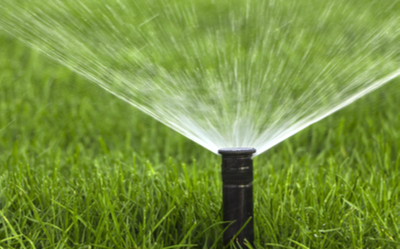- Water the lawn only when needed
Step on the grass; if it springs back up when you move your foot, it does not need water. The Water Authority recommends watering just one day per week in March, two days per week in April and May, three days per week in the summer, two days per week in September and October, and one day per week in November. - Accept a less-than-lush lawn
Grass will naturally go dormant during periods of drought but will readily regenerate when water becomes available. Reduce traffic on stressed turf areas if possible. - Mow as infrequently as possible
Mowing puts the grass under additional stress that requires more water. - Mow higher than normal
Longer leaf surfaces promote deeper rooting and shade the root zone. Never remove more than 1/3 of the leaf blade in one mowing. Return mulched clippings to the lawn. - Match fertilizer to the plant requirement
Fertilizer applications require additional water. Excess fertilizer stimulates top growth, often to the detriment of the root system. Learn to accept turf grasses with low water needs. - Keep lawns free of weeds
Weeds are water thieves and will rob your plants of water and nutrients. Spot spray or remove weeds as they appear. - Don’t water the pavement
- Move sprinkler heads away from curbs or sidewalks. 12” or more away from a paved service is a good rule of thumb.
Signs of under watering your grass:
- Turns bluish-grey
- Grass doesn’t spring back after being stepped on
- It is difficult to push a screwdriver into the soil
- Turf still feels warm after the sun has gone down
Signs of over watering your grass:
- Water is constantly pooled in areas
- Turf has a musty odor
- Soil is extremely soft and mushy
- Algae or mushrooms are present


